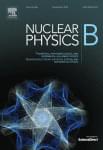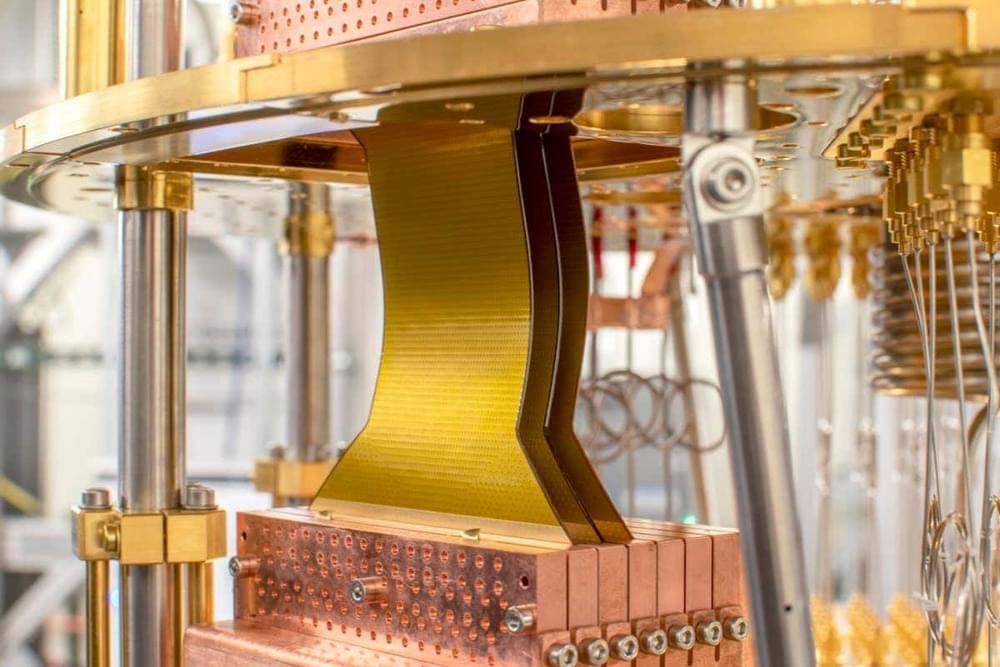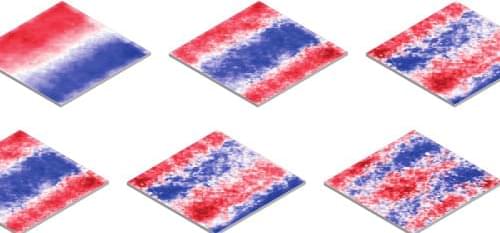IBM plans to move into a more modular design for future quantum computers to allow for more flexibility and rapid scale-up of qubits.



In 1994, the computer scientist Peter Shor discovered that if quantum computers were ever invented, they would decimate much of the infrastructure used to protect information shared online. That frightening possibility has had researchers scrambling to produce new, “post-quantum” encryption schemes, to save as much information as they could from falling into the hands of quantum hackers.
Earlier this year, the National Institute of Standards and Technology revealed four finalists in its search for a post-quantum cryptography standard. Three of them use “lattice cryptography” — a scheme inspired by lattices, regular arrangements of dots in space.
Lattice cryptography and other post-quantum possibilities differ from current standards in crucial ways. But they all rely on mathematical asymmetry. The security of many current cryptography systems is based on multiplication and factoring: Any computer can quickly multiply two numbers, but it could take centuries to factor a cryptographically large number into its prime constituents. That asymmetry makes secrets easy to encode but hard to decode.

Like most physicists, I spent much of my career ignoring the majority of quantum mechanics. I was taught the theory in graduate school and applied the mechanics here and there when an interesting problem required it … and that’s about it.
Despite its fearsome reputation, the mathematics of quantum theory is actually rather straightforward. Once you get used to the ins and outs, it’s simpler to solve a wide variety of problems in quantum mechanics than it is in, say, general relativity. And that ease of computation—and the confidence that goes along with wielding the theory—mask most of the deeper issues that hide below the surface.
Deeper issues like the fact that quantum mechanics doesn’t make any sense. Yes, it’s one of the most successful (if not the most successful) theories in all of science. And yes, a typical high school education will give you all the mathematical tools you need to introduce yourself to its inner workings. And yes, for over a century we have failed to come up with an alternative theory of the subatomic universe. Those are all true statements, and yet: Quantum mechanics doesn’t make any sense.

We explore the possibility that a new universe can be created by producing a small bubble of false vacuum. The initial bubble is small enough to be produced without an initial singularity, but classically it could not become a universe — instead it would reach a maximum radius and then collapse. We investigate the possibility that quantum effects allow the bubble to tunnel into a larger bubble, of the same mass, which would then classically evolve to become a new universe. The calculation of the tunneling amplitude is attempted, in lowest order semiclassical approximation (in the thin-wall limit), using both a canonical and a functional integral approach. The canonical approach is found to have flaws, attributable to our method of space-time slicing. The functional integral approach leads to a euclidean interpolating solution that is not a manifold. To describe it, we define an object which we call a “pseudomanifold”, and give a prescription to define its action. We conjecture that the tunneling probability to produce a new universe can be approximated using this action, and we show that this leads to a plausible result.
A continuation of the enlightenment values that freed mankind of superstition.
Anders Sandberg discusses achieving a transhumanist utopia.
Watch more from Anders Sandberg at https://iai.tv/player#utm_source=YouTube&utm_medium=description.
From the objectives of the transhumanist movement, to actioning these objectives through science and to the importance of risk evaluation in dealing with modern technologies, Anders Sandberg delves into how we’re preparing for a transhumanist Utopia.
#AndersSandberg #Transhumanism #transhumanist.


A series of demonstrations by Micius—a low-orbit satellite with quantum capabilities—lays the groundwork for a satellite-based quantum communication network.
Few things have captured the scientific imagination quite like the vastness of space and the promise of quantum technology. Micius—the Chinese Academy of Science’s quantum communications satellite launched in 2016—has connected these two inspiring domains, producing a string of exciting first demonstrations in quantum space communications. Reviewing the efforts leading up to the satellite launch and the major outcomes of the mission, Jian-Wei Pan and colleagues at the University of Science and Technology of China provide a perspective on what the future of quantum space communications may look like [1]. The success of this quantum-satellite mission proves the viability of several space-based quantum communications protocols, providing a solid foundation for future improvements that may lead to an Earth-spanning quantum communications network (Fig. 1).
Photons, the quanta of light, are wonderful carriers of quantum information because they are easy to manipulate and travel extremely fast. They can be created in a desired quantum state or as the output of some quantum sensor or quantum computer. Quantum entanglement between multiple photons—the nonclassical correlation between their quantum states—can be amazingly useful in quantum communications protocols such as quantum key distribution (QKD), a cryptography approach that can theoretically guarantee absolute information security. QKD schemes have been demonstrated on distances of a few hundreds of kilometers—sufficient to cover communications networks between cities. But increasing their range, eventually to the global scale, is a formidable challenge.

A new quantum random-access memory device reads and writes information using a chirped electromagnetic pulse and a superconducting resonator, making it significantly more hardware-efficient than previous devices.
Random-access memory (or RAM) is an integral part of a computer, acting as a short-term memory bank from which information can be quickly recalled. Applications on your phone or computer use RAM so that you can switch between tasks in the blink of an eye. Researchers working on building future quantum computers hope that such systems might one day operate with analogous quantum RAM elements, which they envision could speed up the execution of a quantum algorithm [1, 2] or increase the density of information storable in a quantum processor. Now James O’Sullivan of the London Centre for Nanotechnology and colleagues have taken an important step toward making quantum RAM a reality, demonstrating a hardware-efficient approach that uses chirped microwave pulses to store and retrieve quantum information in atomic spins [3].
Just like quantum computers, experimental demonstrations of quantum memory devices are in their early days. One leading chip-based platform for quantum computation uses circuits made from superconducting metals. In this system, the central processing is done with superconducting qubits, which send and receive information via microwave photons. At present, however, there exists no quantum memory device that can reliably store these photons for long times. Luckily, scientists have a few ideas.

The observation of the onset of turbulence in a gas of bosons allows researchers to explore how turbulence comes to life.
Despite over a century of trying, physicists have yet to develop a complete theory of turbulence—the complex, chaotic motion of a fluid. Now Maciej Gałka of the University of Cambridge and colleagues have taken a step in that direction by witnessing the onset of turbulence in a quantum gas and observing its evolution over roughly 100 ms [1]. The finding could help scientists answer open questions in turbulence, which is observed in systems ranging from ocean waves to star interiors.

An analogue of a tiny, expanding universe has been created out of extremely cold potassium atoms. It could be used to help us understand cosmic phenomena that are exceedingly difficult to directly detect, such as pairs of particles that may be created out of empty space as the universe expands.
Markus Oberthaler at Heidelberg University in Germany and his colleagues cooled more than 20,000 potassium atoms in a vacuum, using lasers to slow them down and lower their temperature to about 60 nanokelvin, or 60 billionths of a degree kelvin above absolute zero.
At this temperature, the atoms formed a cloud about the width of a human hair and, instead of freezing, they became a quantum, fluid-like phase of matter called a Bose-Einstein condensate. Atoms in this phase can be controlled by shining light on them – using a tiny projector, the researchers precisely set the atoms’ density, arrangement in space and the forces they exert on each other.